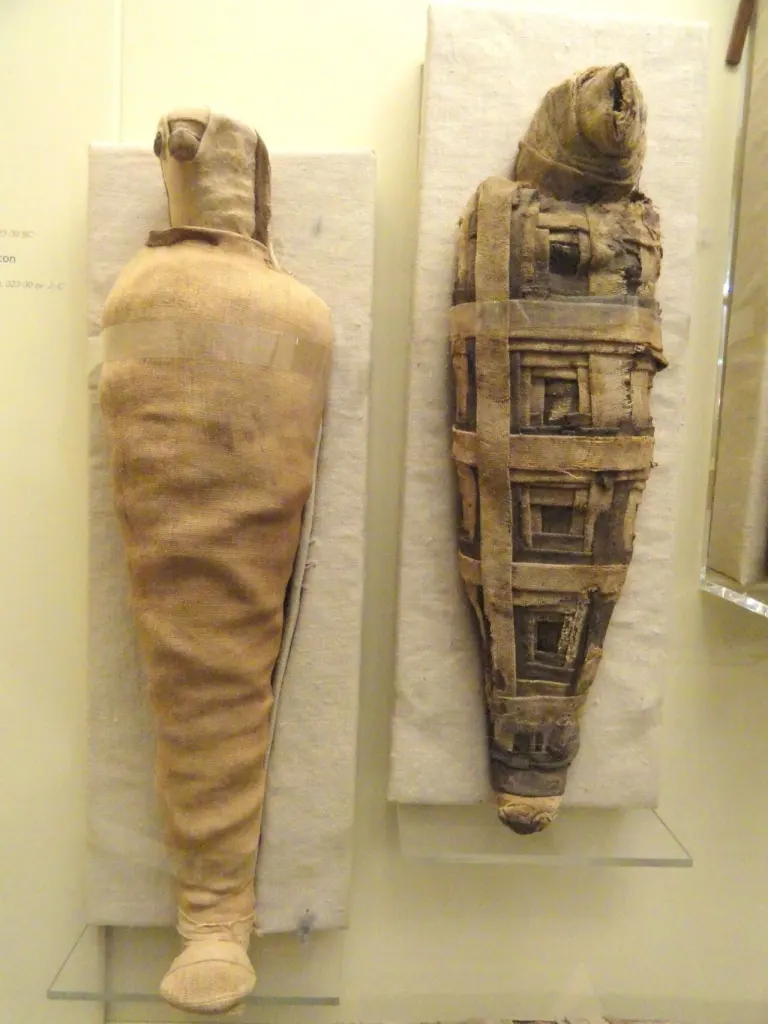Some ‘hawk’ mummies are the remains of birds who were bred and lived in captivity. Many hawk mummy bundles contain only partial skeletons, or none at all. Most animals, however, may have been seen as heralds who entered the Afterlife, grateful to the sponsor who paid for their care, feeding, and embalming. These animals were often given as Votive Offerings. Hawks and falcons represented the god Horus and his mother and aunt, Isis and Nephthys.

The Ancient Egyptians mummified millions of animals and birds. Perhaps because the reason behind this practice was so obvious to them, they never documented why they did it. Though some pets were mummified, most animal mummies were of animals raised in temple precincts for eventual sacrifice and mummification. Specially chosen animals were considered avatars of gods, such as the sacred hawk at Edfu or the Apis bull at Memphis. The ancient Egyptians applied embalming not only to dead humans but also to many animals (cats, dogs, birds, snakes, and crocodiles) for votive and ritual purposes. The god Anubis, also known as Inpu (the jackal), represented the god of death, embalming, and mummification.
These practices date back to the Ptolemaic Period, around 305-30 BC, and continued into the Roman Period, approximately 30 BC – 395 AD. Examples of these mummies, from Saqqara, can now be found in the Royal Ontario Museum, Toronto.



